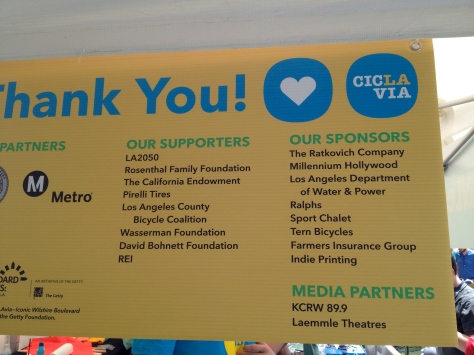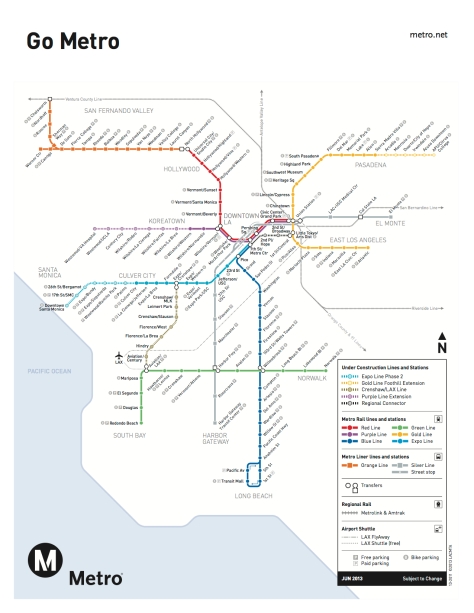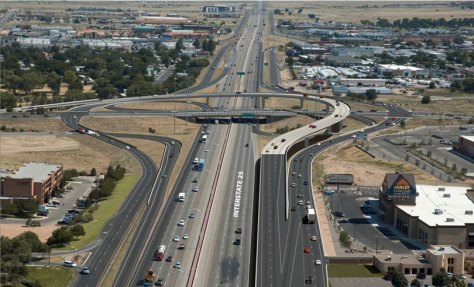– Dan Majewski

IMAGINE: Central Avenue, from the Rio Grande River to San Mateo, completely closed for an entire Saturday or Sunday. Open lots filled with stages and music. More bicycles, rollerblades, long boards and strollers than you’ve ever seen in your life. People lying in the middle of the street on a mattress. Tall bike riding leotard-wearing youth. Old Route 66 transformed into New Route 66, a street for people.

The equivalent of this happened in Los Angeles on Sunday, June 23. Six miles of Iconic Wilshire Boulevard, the traffic and exhaust choked historic Main Street of Los Angeles, was closed to motor vehicles from 9 AM – 4 PM.

What is CicLAvia?
The concept is simple:
1) close the street to vehicles
2) bring in food trucks, live music, yoga teachers, etc.
3) make sure all of the businesses along the route are open
4) see what happens!
It is based on ciclovia, a tradition that began in Bogota, Columbia three decades ago. The concept is now rapidly spreading across the United States and other parts of the world. Tucson, a city with many similarities to Albuquerque, is now planning its sixth event. An estimated 25,000 people attended the most recent event in April. Read about my experience at the first Tucson ciclovia here.
Los Angeles first tried this experiment on 10/10/10. The route utilized side streets that normally had little car traffic. It had public support but many a naysayer. After all, modern Los Angeles is practically defined by car culture. Los Angeles is world renowned for soul-crushing traffic jams, a massive freeway system, fancy celebrity filled Ferraris, Jay Leno’s car collection… you get the idea.
Despite the doubt, the inaugural CicLAvia was a huge success… 100,000 people huge.

Where is CicLAvia Now?
There will be three CicLAvia events on the streets of Los Angeles in 2013. It has a vast array of financial supporters and local champions as shown in the photo below.

The event on June 23 was incredible. The route itself included many famous buildings, museums and public spaces best seen at the speed of a bicycle or slower. For the first time “dismount zones”, where people on foot were prioritized, anchored each end of the route. It marked a welcome change in policy since the goal of CicLAvia is to open the streets to ALL non-auto users, especially people on foot. The fact that this route was shorter than previous routes also made it easier to walk the entire distance.
Read more about the event here and here. The official CicLAvia website can be accessed here.

The New Los Angeles
As someone who was born in Los Angeles and visits frequently, there is change afoot. The Southland is truly beginning to shift its policy and funding priorities towards transit, cycling and walking.
Los Angeles, up until 5 years ago, barely had a bicycle plan. It had little official acknowledgement of bicycles as either a form of transportation or a way to get some exercise and fresh air. The big shift occurred when the outgoing mayor, Anotnio Villagrosa, was hit while riding his bicycle on Venice Boulevard in 2010.
Suddenly, doors opened. It’s unfortunate that it takes a crisis but it’s incredible to see the progress since.
Los Angeles is only one of many cities in the region currently transforming its streets. Long Beach and Santa Monica, both of which will be written about in future posts, are currently the leading the progressive urban awakening in Southern California.
Cities Are for People
The era of car dominance will be looked back upon as an odd blip in human history. For all of time until the past 75 years, every human settlement was built around the person on foot. Even when railroads and streetcars were invented, the city continued to retain this focus. After all, one has to walk to the streetcar station or the railroad depot. It is only with the advent of highly subsidized fossil fuels that our urban areas have shifted into sprawling behemoths connected by 15 lane super highways and dominated by automobile.
Los Angeles is THE poster child, the ultimate symbol for a new direction, a new future, a new hope. With two rail transit lines under construction and three about to break ground, the people of SoCal have voted for a future where one can ride a bicycle safely on the streets of Los Angeles for more than one day a year, where you don’t need a car to get everywhere, where walking is a reasonable and safe way to move around the community.

Central Avenue and Wilshire Boulevard: Creating a 21st Century Corridor
Central Avenue and Wilshire Boulevard are two urban corridors experiencing similar transitions. Wilshire recently received designated bus priority lanes. It (like Central) has more transit riders than any other corridor in the city. Plans have been approved for rapid transit on the corridor. However, it will be located underground, providing the city with an opportunity to reshape the streetscape dramatically.
On Central Avenue, an underground transit system makes little sense based the population of our region. Our options at this point are to do nothing, bus rapid transit (in any variety of shapes or forms), light rail, streetcar or possibly a combination of all of the above. Each segment of Central has a slightly different need and this needs to be acknowledged. This community conversation is beginning to bear fruit but it is missing something: a larger regional vision.
The Need for a Regional Vision
Los Angeles is moving forward so rapidly because it developed a regional vision. In 2008, the people of Southern California voted for a tax increase called Measure R to fund improvements in transportation around the region. They are not the only metro area which has done this; Tucson also voted on a similar (but much smaller) proposal in 2006 called the Regional Transportation Authority. All over the country, metropolitan areas are voting not to wait around for the federal government. They are deciding to work together to develop a vision for the future of the region. These movements are both bottom up and top down.
Here in Albuquerque, we recently voted to allocate local bond money to be spent on the Paseo del Norte interchange. This project on its own is not necessarily a bad thing. However, the fact that it was approved in isolation is a disturbing trend. Will we continue to just vote on individual projects as needed? This is a terrible strategy. The PDN interchange should have been part of a larger transportation improvement package.

The advantage of a package is projects which would not necessarily be supported independently can be funded when combined with other more popular projects. Also, it allows everyone to get a piece of the pie. For example, the Los Angeles funding measure allocated different percentages of the tax to different pieces of the transportation puzzle: 20% to bus operations, 20% for highway capital projects, etc.
An example from Albuquerque could be 20% for BRT, 10% for Rapid Ride, 5% for protected bike infrastructure, 30% for Paseo del Norte, etc. The options are limitless and putting it all together results in a strategy and a vision.
ABQ 2020
In order to progress economically as region, we need to develop an infrastructure investment package. We need to work together to find out which projects are most important, how much they will cost and how they can be a part of developing a 21st century economy.
I will be explaining the specifics of my proposal in a future post.
Thank you for reading and please comment below!
